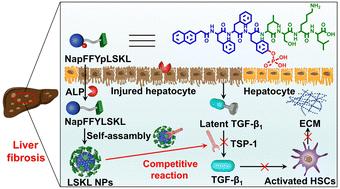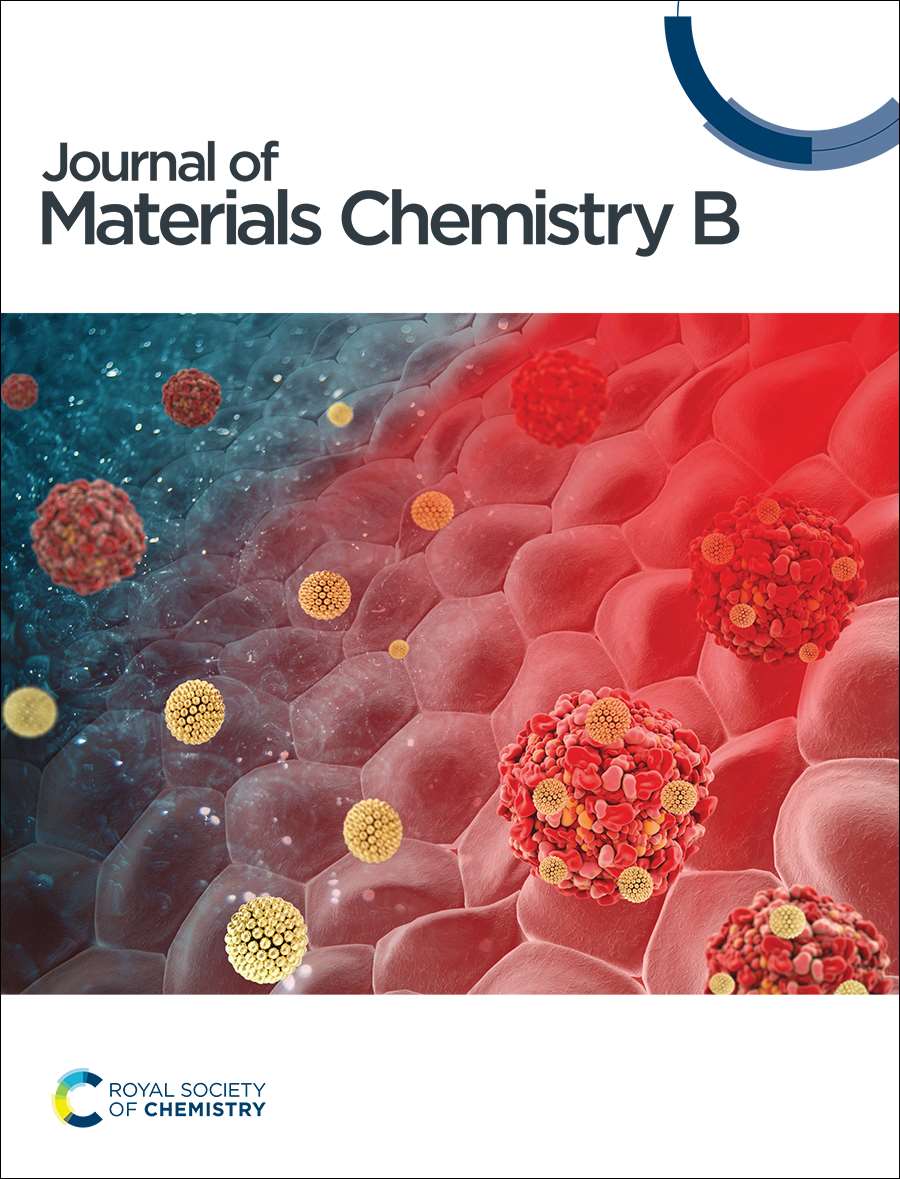原位自组装肽纳米颗粒提高抗肝纤维化作用。
IF 6.1
3区 医学
Q1 MATERIALS SCIENCE, BIOMATERIALS
引用次数: 0
摘要
拮抗肽Leu-Ser-Lys-Leu (LSKL)能够阻断转化生长因子-β1 (TGF-β1)信号通路,具有抗纤维化作用。在此,我们基于碱性磷酸酶(ALP)指导的自组装策略原位构建LSKL纳米颗粒(NPs),以提高其对肝纤维化的特异性治疗效果。本文章由计算机程序翻译,如有差异,请以英文原文为准。

In situ self-assembled peptide nanoparticles improve the anti-hepatic fibrosis effect†
Antagonistic peptide Leu-Ser-Lys-Leu (LSKL) is capable of blocking the transforming growth factor-β1 (TGF-β1) signaling pathway and exhibits anti-fibrotic effects. Herein, we constructed LSKL nanoparticles (NPs) in situ based on an alkaline phosphatase (ALP)-instructed self-assembly strategy for improving its specific therapeutic effect against liver fibrosis.
求助全文
通过发布文献求助,成功后即可免费获取论文全文。
去求助
来源期刊

Journal of Materials Chemistry B
MATERIALS SCIENCE, BIOMATERIALS-
CiteScore
11.50
自引率
4.30%
发文量
866
期刊介绍:
Journal of Materials Chemistry A, B & C cover high quality studies across all fields of materials chemistry. The journals focus on those theoretical or experimental studies that report new understanding, applications, properties and synthesis of materials. Journal of Materials Chemistry A, B & C are separated by the intended application of the material studied. Broadly, applications in energy and sustainability are of interest to Journal of Materials Chemistry A, applications in biology and medicine are of interest to Journal of Materials Chemistry B, and applications in optical, magnetic and electronic devices are of interest to Journal of Materials Chemistry C.Journal of Materials Chemistry B is a Transformative Journal and Plan S compliant. Example topic areas within the scope of Journal of Materials Chemistry B are listed below. This list is neither exhaustive nor exclusive:
Antifouling coatings
Biocompatible materials
Bioelectronics
Bioimaging
Biomimetics
Biomineralisation
Bionics
Biosensors
Diagnostics
Drug delivery
Gene delivery
Immunobiology
Nanomedicine
Regenerative medicine & Tissue engineering
Scaffolds
Soft robotics
Stem cells
Therapeutic devices
 求助内容:
求助内容: 应助结果提醒方式:
应助结果提醒方式:


